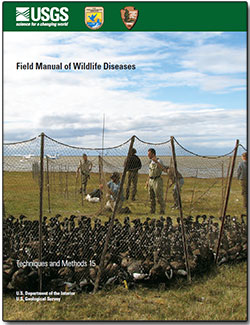 Introduction
Introduction
Causes of mortality in wildlife include natural conditions—such as the viral, bacterial, and fungal diseases discussed in other chapters of this manual—and human intervention. Direct human intervention in wildlife deaths may be associated with individual human actions, such as gunshot or poisonings, or with institutions, such as wind farms or mining operations. Mortality that can be directly attributed to humans may be considered a crime based on the animal(s) affected and (or) the agent used.
Wildlife laws were established to protect our nation’s wildlife resources and assist in conserving healthy populations of native wildlife. A variety of laws pertain to wildlife, such as the Migratory Bird Treaty Act, which makes it illegal, except as permitted, to capture, kill, or possess a portion or all of any migratory bird, a member of the group that includes the vast majority of wild birds present in the United States. Similar to pathogens that can spread unchecked through a wild population, a person or an institution that illegally kills wildlife may continue this practice indefinitely or until the illegal activities are detected and addressed.
Convicting the perpetrator of a crime, however, requires that certain practices and procedures be followed so that a solid legal case can be constructed. As with any crime, investigation of the event is led by law enforcement personnel who are well-versed in the applicable laws, oversee the collection of evidence, and pursue persons or entities of interest. These individuals are uniquely qualified and trained to maintain the integrity of evidence, evaluate suspects to effectively prosecute the case, and effect the penalties of the law. The investigation of direct crimes against humans may involve teams of 5–10 law enforcement agents and specialists—each with a certain focus such as blood spatter, fingerprints, or ballistics—in processing a crime scene. In contrast, investigations of crimes against wildlife generally involve markedly fewer wildlife law enforcement agents, and in many instances of unlawful wildlife death, only one law enforcement agent is available to process an entire crime scene and work on a case. Thus, the assistance of individuals familiar with the geographical area, the endemic animal populations, and the local ecology can be very important for building an effective case.
The aims of this chapter are to 1) help biologists or field personnel recognize the signs that indicate a crime may have been committed, and 2) to give readers a basic understanding of how a wildlife crime scene is processed. This chapter is not intended to give readers the tools to investigate a crime scene alone, but will hopefully make them a valuable asset to law enforcement agents who respond to the scene. An effectively processed case, resulting in prosecution of a suspect, supports the law as a deterrent to future acts that could endanger the conservation of wildlife.